Powerful benefits of mint leaves that you should be aware of
Mint leaves benefits Mint leaves do more than just provide taste to food and beverages; they have several health benefits. A simple yet effective supplement to a healthy lifestyle are mint leaves. They provide a range of benefits, from improving skin health to facilitating digestion, that are simple to include in daily activities. Mint is a natural approach to improving your health, whether you chew on fresh leaves, use it as a skin treatment, or consume it as tea.Short & Effective Express Strength Workouts Created To Help You Build Your Strength!
Cooking using fresh mint and other herbs and spices can help people add flavor while consuming less sugar and sodium. Various varieties of mint plants have been utilized as medicine throughout history. People with irritable bowel syndrome (IBS) may benefit from the various antioxidant properties and potential health advantages of mint plants.
We break down the nutritional value of mint and discuss its potential health advantages in this article. We also offer advice on how to increase the intake of mint in your diet.Early BFCM: ENJOY 15% OFF!
1: Promotes Improved Eye Health
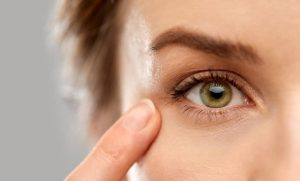
Mint, being a strong source of vitamin A, can also help to improve eye health. This fat-soluble vitamin is essential for a number of systems that are necessary for the best possible eye health. Additionally, vitamin A aids in the prevention of macular degeneration and other eye conditions.
2: Enhances your Immune System
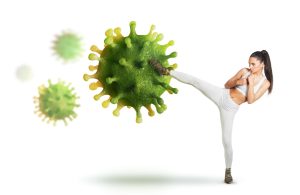
Mint leaves are high in calcium, phosphate, and vitamins C, D, E, and A, all of which strengthen the immune system. Additionally, it shields your cells from harm, which lowers your chance of developing a chronic condition.
3: Packed with Nutrients

Mint has a reasonable quantity of nutrients, however it is not usually ingested in big quantities.
Actually, only 2 tablespoons (11.4 grams) of spearmint from a reliable source include:
- 5 calories
- 0.8 grams of fiber
- 3% of the Daily Value (DV) of vitamin A
- 8% of the DV for iron
- 6 percent of the DV is Manganese.
- 3% of the DV for folate
Consuming even two teaspoons of mint may be challenging because of its potent flavor, which is why it is frequently used in modest amounts in dishes. You might, however, get quite close to this quantity in some salad recipes that call for mint in addition to other ingredients. Vitamin A, a fat-soluble vitamin that is essential for eye health and night vision, is especially abundant in mint. In comparison to other herbs and spices, it is also a powerful source of antioxidants. Antioxidants aid in defending your body against oxidative stress, which is a form of cell damage brought on by free radicals.Check Out This Week’s Best Deals. New Deals added every week
4: Helps Gut Health

Because it relaxes the smooth muscles throughout the gastrointestinal (GI) tract, mint, particularly peppermint, has also been associated with better gut health. This is encouraging for nearly every gastrointestinal issue you may be experiencing, ranging from diarrhea and constipation to gas and bloat. Furthermore, studies have shown that this herb is especially helpful for the symptoms of irritable bowel syndrome (IBS).
5: Helps Maintain Oral Health

From toothpaste and mouthwash to gum and breath mints, mint is used in a wide range of oral care products for good reason. Peppermint oil has antibacterial, antifungal, and antibiofilm qualities that help prevent or treat a variety of oral health issues in addition to freshening breath. These advantages amply support the widespread usage of this well-liked herb in contemporary dentistry.
6: Enhanced Brain Activity

It has been demonstrated that mint improves brain function, preventing mental exhaustion and enhancing alertness and memory. Usually, inhaling the plant’s essential oils yields these kinds of benefits instead of consuming the plant.
7: Decrease Symptoms of Coldness

Although mint cannot treat the common cold because it is caused by a virus, it can help alleviate its symptoms. According to studies, mint can help you breathe better through your nose, clear your sinuses, and get over the worst of your cold. Why don’t you warm yourself with a warm cup of mint tea?
8: Relieves Asthma and Allergies

Rosmarinic acid, a potent antioxidant and anti-inflammatory, is found in mint leaves. This substance helps those with asthma and allergies by blocking substances that cause allergies.
9: May Conceal Bad Breath
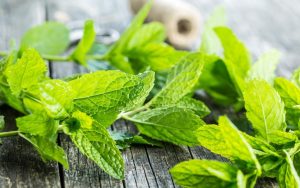
Some of the first products people grab for when attempting to prevent or eliminate bad breath are mint-flavored chewing gum and breath mints. Most of these products can temporarily cover up bad breath, according to an older source (Trusted Source). They don’t lessen the germs or other substances that initially cause bad breath, though; they merely mask it. However, according to test-tube studies, chewing fresh peppermint leaves and drinking peppermint tea may be able to both kill bacteria and cover up bad smell. According to a reliable source, peppermint oil has antimicrobial properties.Aquasana Winter Sale: Get up to 55% off Sitewide at Aquasana
10: Aid in Stress Management

Mint may be useful in reducing anxiety, weariness, and frustration, according to research. According to some research, the scent of mint may even help you relax, so all you need to do is eat something peppermint-flavored or diffuse some mint oil in the air. Additionally, research indicates that peppermint helps lower blood pressure and avoid hypertension.
11: Reducing Irritated Skin
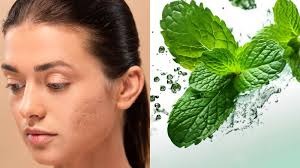
Many social media skin-care experts are promoting the cleansing qualities of salicylic acid and vitamin A, which have become very popular in the skincare industry. Because mint includes antibacterial qualities, salicylic acid, and vitamin A—all of which are good for skin that is irritated or prone to acne—mint products can be a terrific addition to your skincare regimen. Many solutions on the market contain mint, which is believed to clear clogged pores, lessen redness, and treat pimples. Mint also does wonders for your hair because it contains a lot of carotene and antioxidants. Mint is therefore helpful in treating dandruff and other issues related to the scalp.
12:Reduces Nausea and Morning Sickness
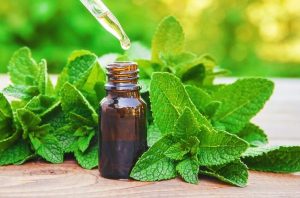
Because it works so well for gastrointestinal problems, it can also work wonders for morning sickness-related nausea. It combats nausea and activates the digestive enzymes. For expectant mothers who frequently suffer from morning sickness, it may be an excellent treatment.
13: Can Help with Losing Weight
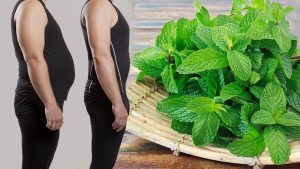
Because of its high fiber content and low calorie content, mint leaves might help you feel filled for longer periods of time and avoid needless eating. When combined with a healthy diet and consistent exercise, mint can help with weight loss by promoting better digestion and fat metabolism.Use instructions: Include mint in salads, smoothies, or detox beverages to incorporate it into your regular diet. An excellent substitute for sugary drinks is a cool glass of water with mint leaves, cucumber, and lemon.
Adding to Your Diet is Simple

Mint is a simple addition to drinks, smoothies, sweets, and green salads. Another common approach to include peppermint in your diet is to drink peppermint tea.
But a lot of research demonstrating mint’s health advantages didn’t include consuming the leaves with food. Rather, mint was consumed as a pill, applied topically, or inhaled through aromatherapy.
Assessing your goals and the plant’s use in the research for that specific application are crucial when using mint for health.
- Some of the research mentioned above should be summarized in the list below.
- Consuming dried or fresh leaves: A remedy for foul breath.
- Essential oil inhalation may help with cold symptoms and cognitive performance.
- Putting it on the skin: To lessen nursing-related nipple soreness.
- Taking pills with food may assist with indigestion and IBS.
Summary
Can you eat mint? Of course! Mint is a nutritious supplement to your diet and a great source of vitamins and minerals. Not everyone will benefit from using mint in their daily routine, but don’t let that stop you from taking advantage of its health benefits. Do you dislike peppermint tea? Do you dislike minty sweets? How about indulging in a delicious organic Kombucha Virgin Mojito? It still counts if you add a dash of white rum.
Frequently Asked Questions
Can we have mint water every day?
Most people can safely consume regular amounts of mint water. The average adult need 9.7 to 16 cups (2.3 to 3.8 L) of water each day. Speaking with your healthcare provider about your individual hydration requirements may be the best course of action if you intend to consume more mint water than this .
How are pudina leaves used?
In addition to being used to prepare chutney, raita, and refreshing drinks, pudina leaves add a unique flavor and scent to food. Due to its remarkable therapeutic qualities, mint leaves have long been prized as a mouth refresher.
Does mint help hair?
In addition to stimulating the hair follicles and encouraging hair growth, mint oil increases blood circulation. Mix three tablespoons of virgin coconut oil with three to five drops of mint oil. Apply this mixture on your scalp after dividing your hair into pieces. Give your scalp a little massage for five minutes to improve the absorption of oil.
What is the daily amount of mint leaves?
The ideal method is to eat 12 to 15 fresh mint leaves every day.
How do you use fresh mint?
Use in Food
Mint gives a number of meals a zesty taste. Add to your vegetables, roasted potatoes, fruit bowls, or salads. A delicious blend of mint and basil can also be used to produce pesto. Any dish will become instantly more fascinating when mint is added!
What is the finest spice for hair growth?
The vitamins and minerals found in black pepper are vital for healthy hair. It encourages hair growth by increasing blood flow to the scalp










